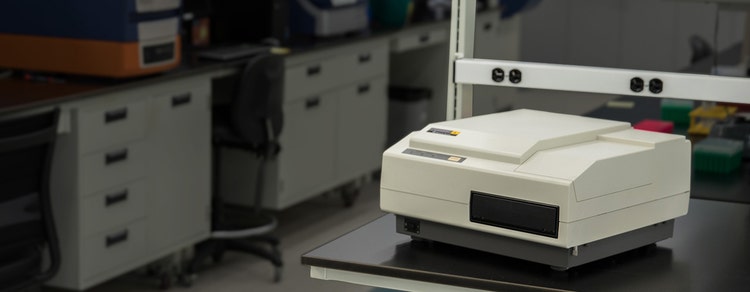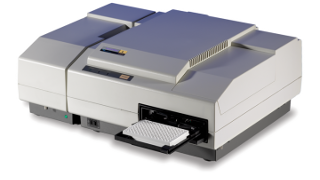

SpectraMax L Microplate Reader
Sensitive luminometer with programmable injector options for 96- and 384-well microplates
Flash and glow luminescence detection in an upgradeable platform
The SpectraMax® L Microplate Reader measures flash and glow luminescence assays in both 96- and 384-well plates. It is upgradeable to include a barcode reader, programmable injectors, and dual-channel configurations for a 2-fold increase for medium throughput. The high sensitivity, low-noise photomultiplier tubes (PMTs), and variable-volume injector configuration make this reader ideal for fast kinetic assays requiring continuous monitoring during injection and measurement.

Detect all samples
The analog and photon counting capability provides a dynamic range of nine orders of magnitude, eliminating the need to dilute bright samples while maintaining high sensitivity for dim samples.

Get 2-fold improvement in speed
The 2-channel configuration is available with 0, 2, or 4 injectors. The 4-injector configuration enables a 2-fold improvement in speed for traditional flash and glow assays.

Automate injector workflows
The autowashing injectors can be programmed to rinse the injectors following each use, reversing the direction of flow so reagents can be recovered.

SpectraMax-L-Lumi
Features

Reduced noise
Ultra-fast photon counting technology amplifies the PMT signal with a fast pulse amplifier. This reduced noise capability enables a higher signal-to-noise ratio and low crosstalk.

PMT calibration
The automatic PMT calibration method is based on readings of 4 internal LEDs at 395, 470, 527, and 570 nm. The manual PMT calibration method is based on readings of 4 wells from the assay itself.
Latest Resources
Featured Applications
Customer Breakthrough
Applications of SpectraMax L Microplate Reader
Resources of SpectraMax L Microplate Reader
SpectraMax® L Microplate Reader
SpectraMax L
Config
